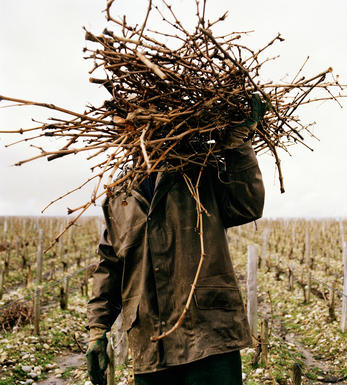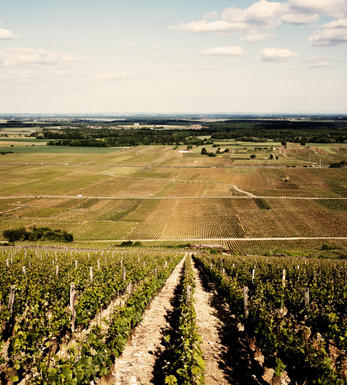
2015 Vougeot, Les Petits Vougeots, 1er Cru, Vieille Vigne, Domaine Fourrier, Burgundy

Critics reviews
Neal Martin - 28/12/2016
About this WINE

Domaine Fourrier
The Domaine Fourrier is a domaine in the Gevrey-Chambertin region of Burgundy. In 1994, having previously done six month internships with Henry Jayer and Domaine Drouhin, Oregon, either side of military service, Jean-Marie Fourrier took over the domaine from his father Jean-Claude who had been working since the age of fourteen, on the death of his own father in 1961. Jean-Marie had his own views on how best to run the vineyards and make the wine, and his own markets to create. He is assisted by his sister Isabelle, in the vineyards, and by his English wife Vicki.
Jean-Marie has expanded the range by vinifying and bottling apart each of the Gevrey 1er crus which is father used to blend together, and by increasing domaine bottling to 100% excepting the produce of young vines. In general though he is lucky enough to be working with very old vines, mostly planted between the two World Wars, and thus only with local genetic material and not modern clones.
Fourrier does not fit into any specific camp of vignerons. He is not biodynamic though his approach shares much with the more sensitive protagonists of that philosophy. You have to get it right in the vineyard, which means being there all the time, and understanding equilibrium. Yields are restricted through pruning, debudding and careful management of vigour – he is not a fan of green harvesting, nor for that matter of leaf-plucking in July.
In the cellar, Jean-Marie is looking to preserve the silkiness of the fruit in his wine. There is a vibrating sorting table, after which the grapes are entirely de-stemmed (he tried using stems in 1995 with unsatisfactory results, but may experiment again in his new, purpose-built cuvérie.) The vats are not cooled at the start of fermentation, Jean-Marie being happy with the natural 3 to 4 day pre-maceration before the grapes start to ferment of their own accord. The skins are punched down, manually, two to four times a day, but there is no pumping over. After fermentation Jean-Marie does cool the vats down to about 12°c, which inhibits the early onset of malolactic fermentation.
All the wines, whether village or grand cru, are matured in 20% new oak, the idea being to keep renewing the barrel cellar rather than to influence the fruit with any barrel flavours. For Jean-Marie’s ideas on steam cleaning barrels, please see page x. The wines are not racked at all until transferred to tank about two months before bottling in the spring, eighteen months after harvest.
The results of all this meticulous work are very appealing wines, each of which shows the character of its provenance quite clearly. The wines are bright in colour but not exceptionally deep, with very pure red fruit flavours on the nose. The shape of the wine thereafter depends on the vineyard. Tannins are typically fine-boned except where the cru (Clos Solon, Combe aux Moines) dictates otherwise.
Jasper Morris MW, Burgundy Wine Director and author of the award-winning Inside Burgundy comprehensive handbook.

Vougeot
Most of the wine produced in this small village comes from a single, walled Grand Cru vineyard, the famous Clos de Vougeot. The vineyard in its present form dates from 1336 (when it was first planted by monks of Cîteaux), although it was not until the following century that it was entirely enclosed by stone walls.
Clos de Vougeot is both the smallest commune and the largest Clos in the Cote d’Or. It consists of 50 hectares of vineyards shared among 82 owners, with six soil types. There is quite a difference in quality between the upper (best) and lower (least fine) parts of the vineyard, though in medieval times a blend from all sectors was considered optimum.Le Domaine de la Vougeraie makes a very fine white wine from Le Clos Blanc de Vougeot, first picked out by the monks of Cîteaux as being suitable ground for white grapes in the year 1110.
- Five hectares of village Vougeot
- 12 hectares of Premier Cru vineyards (four in all): Les Cras, Les Petits-Vougeots, Clos de la Perrière and Clos Blanc de Vougeot
- 51 hectares of Grand Cru vineyard – Clos de Vougeot
- Recommended producers: Domaine de la Vougeraie, Domaine Bertagna, Engel, Anne Gros, Grivot, Liger-Belair, Meo-Camuzet.

Pinot Noir
Pinot Noir is probably the most frustrating, and at times infuriating, wine grape in the world. However when it is successful, it can produce some of the most sublime wines known to man. This thin-skinned grape which grows in small, tight bunches performs well on well-drained, deepish limestone based subsoils as are found on Burgundy's Côte d'Or.
Pinot Noir is more susceptible than other varieties to over cropping - concentration and varietal character disappear rapidly if yields are excessive and yields as little as 25hl/ha are the norm for some climats of the Côte d`Or.
Because of the thinness of the skins, Pinot Noir wines are lighter in colour, body and tannins. However the best wines have grip, complexity and an intensity of fruit seldom found in wine from other grapes. Young Pinot Noir can smell almost sweet, redolent with freshly crushed raspberries, cherries and redcurrants. When mature, the best wines develop a sensuous, silky mouth feel with the fruit flavours deepening and gamey "sous-bois" nuances emerging.
The best examples are still found in Burgundy, although Pinot Noir`s key role in Champagne should not be forgotten. It is grown throughout the world with notable success in the Carneros and Russian River Valley districts of California, and the Martinborough and Central Otago regions of New Zealand.


Buying options
Add to wishlist
Description
The 2015 Vougeot 1er Cru Petit Vougeot has an open-knit bouquet with generous morello cherry and crushed strawberry scents. entwined with blood orange and Satsuma aromas. The palate is medium-bodied with sappy red berry fruit, a fine line of acidity, though it just clams up a little towards the finish. Give this a couple of years in bottle.
Neal Martin - 28/12/2016
wine at a glance
Delivery and quality guarantee